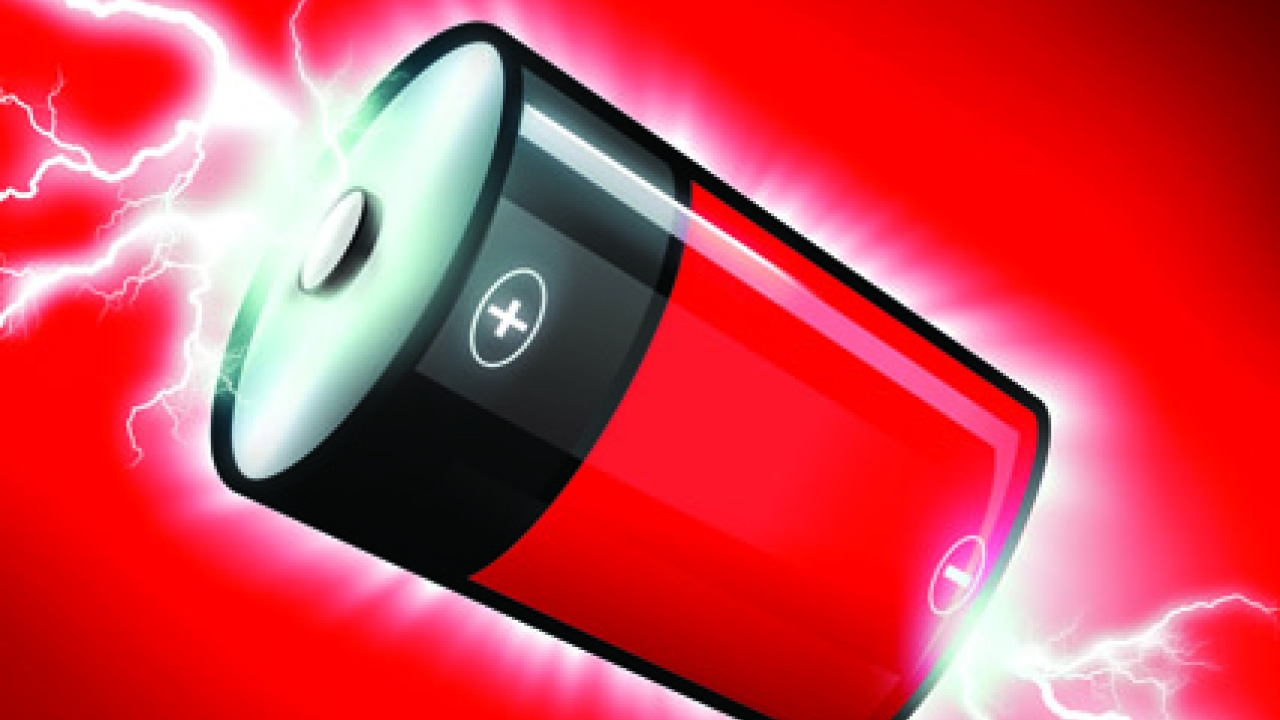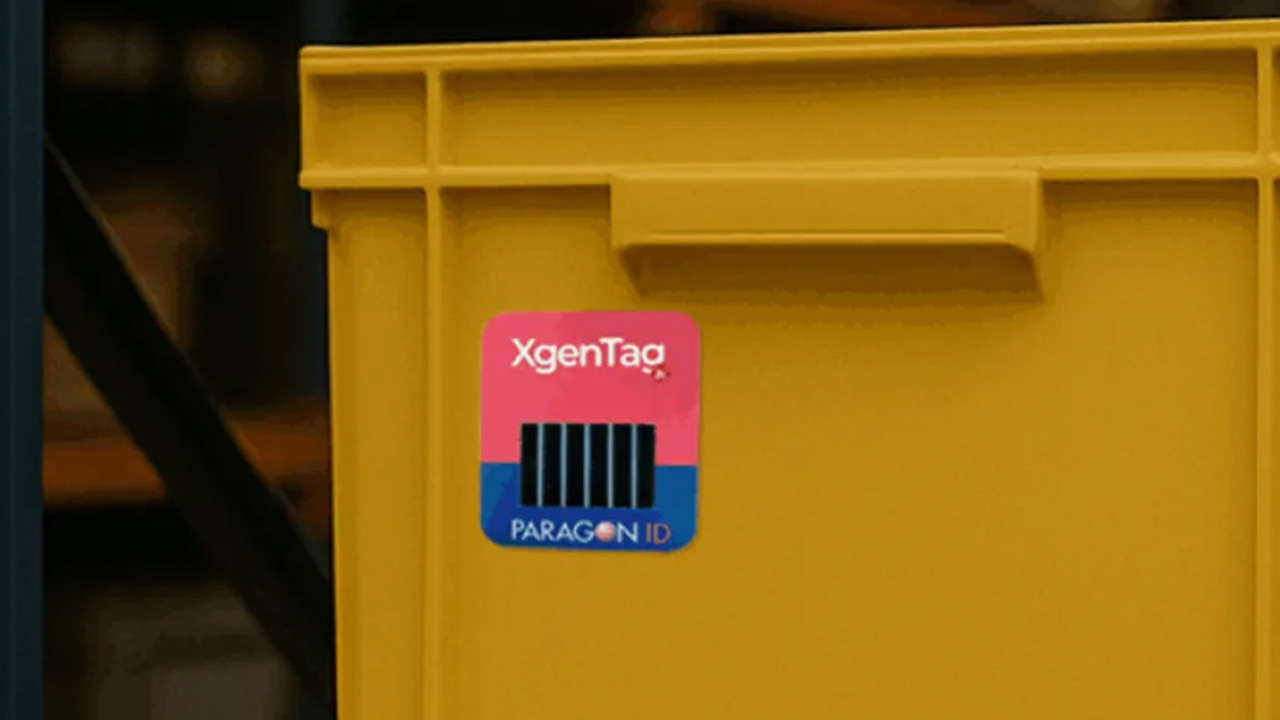Printed batteries power smart revolution

High-volume, high-value printed electronics options now include battery-assisted RFID, RF-enabled sensor systems and eco-friendly interactive packaging, writes Matt Ream of Blue Spark Technologies
Printed electronics, in the development and testing stages for several years, is now operational and ready for prime time. Industry analysts predict that the market potential for printed electronics will be 35 billion US dollars by 2018, and sales of thin film and printed batteries as a power source are expected to exceed five billion US dollars by 2015. Going forward, these predictions about printed electronics and printable batteries signal a powerful opportunity for label designers, producers and converters.
Printed electronics can be defined as the printing of electronic components on common media such as paper, plastic or textiles using traditional high-volume printing techniques.
Today’s innovative printed electronics options call for incorporating one or more thin-profile electronic elements, such as programmable chips (ICs), sensors, antennas, RFID tags, LEDs, electro-conductive and color-changing electro-chromic inks. The functionality of the electronic elements is powered and activated by thin, flexible, eco-friendly carbon-zinc batteries, which are also printable in mass quantities in a roll-to-roll process.
For companies in the label and converting business, some high-value applications for printed electronics reside in battery-assisted passive (BAP) RFID, RF-enabled sensor systems, such as time and temperature monitoring and data logging systems, and interactive consumer goods packaging. Today, new options are being designed and implemented to improve accuracy and efficiency of workflow processes in the manufacturing, supply chain logistics, retail and other industry sectors. And innovative packaging and point-of-sale merchandizing displays are bringing new excitement to the consumer packaged goods (CPG) and retail sectors.
This article takes a closer look at how label designers and converters can profit from the printed electronics trend by partnering with system developers and integrators of high-volume options. It also describes the essential role played by low-voltage printed carbon-zinc batteries in ensuring reliable operation and performance.
Battery-assisted passive RFID
Battery-assisted passive (BAP) RFID tags, also known as semi-passive tags, incorporate a small, flexible carbon-zinc battery to increase the tag’s sensitivity, resulting in longer read ranges and faster reads than pure passive RFID. The eco-friendly batteries can also improve read performance and reliability in challenging environments, such as those involving densely packed liquids or metals. In independent testing conducted on one type of BAP RFID tag, free space read ranges in excess of 130 feet have been observed, using traditional EPC Gen2 readers.
Active RFID tags require a more powerful battery and are larger and more expensive to manufacture and deploy. BAP RFID effectively bridges the price/performance gap between pure passive UHF and active RFID, and does so with far less cost and complexity. BAP RFID tag and label options offer many of the same advantages of active RFID and are fully compatible with existing RFID architecture and EPC Gen2 standards, which lowers the cost of integration versus that of active RFID. The tags can be manufactured in high volumes using conventional printing processes, and their small form factor makes integration relatively easy.
As a result, BAP RFID offers a practical and cost-effective choice for many applications that provide significant user benefits. Industry examples include:
• Manufacturing and supply chain – Inventory management and closed-loop tracking of parts, materials, work in process or finished goods increases visibility, accuracy and productivity in the plant and distribution center.
• Asset management – Tracking and tracing of valuable assets, whether reusable pallets and containers, tools and equipment, computer hardware, or essential files and documents, minimize loss and theft, save time and improve asset control.
• Retail – Smart case and shelf systems help reduce shrinkage due to misplaced merchandize or theft, and can help improve inventory management to minimize overstocks and out-of-stocks.
• Healthcare, security and public safety – RFID cards, badges or wristbands can be deployed to track the location of people in secure buildings and hospitals, at large public events, and at disaster management and evacuation sites.
RF sensor and data logging systems
Radio frequency-enabled time and temperature monitoring systems are becoming increasingly popular in the food industry to ensure cold chain compliance. Using such systems, processors and distributors of meat, poultry, seafood, perishable produce, refrigerated and frozen foods can better ensure consumer safety and product quality, while minimizing waste. Another early adopter of time and temperature monitoring options are pharmaceutical firms that make and ship temperature-sensitive drugs and biologicals, such as vaccines, which require strict temperature control to maintain their efficacy.
Compact, portable RF-linked sensor systems are typically comprised of a built-in sensor or external probe sensor device, an RFID chip and antenna, programmable chip (IC), and thin, flexible, low-voltage printed battery. In addition to temperature monitoring, the systems can also be designed to monitor ambient humidity, shock or vibration for products that require careful handling throughout the supply chain. And, they can monitor individual containers or cases of goods in transit to be sure they have not been tampered at any point in the chain. In all of these applications, standard low-voltage printed batteries are embedded, along with the other printable electronic components, into a smart card, tag or label to provide the primary power source required to activate time-phased monitoring and data logging.
‘Smart’ packaging
One of the newest and most exciting applications of printed electronics is smart packaging, sometimes called interactive or e-packaging. CPG leaders and their package designers are working with printed electronics industry pioneers to develop and implement new applications in item-level packages and point-of-sale promotional displays designed to attract consumer attention and boost sales.
Depending on the special effects functionality desired, interactive packaging and displays can embed such printed electronic components as programmable chips (ICs), sensors, RFID tags, mini-speakers, mini LEDs, and conductive or light-changing inks. Some examples of item-level smart packaging and promotional displays include:
• Cereal boxes featuring Interactive games or puzzles, or a character that talks or sings a catchy jingle
• A cookie box for kids that ‘transforms’ into a toy fire truck, complete with flashing light and siren, after the contents have been consumed
• A prepared or frozen food package that reveals an easy-to-read recipe or series of recipes, available at the touch of a button
• A ‘shelf talker’ or end-of-aisle retail merchandising display featuring a questionnaire or other special effects to engage shoppers and call their attention to products on the shelf
Carbon-zinc batteries
All of the printed electronics applications discussed here require a reliable low-voltage power source capable of activating the other components. The battery supplier prints thin, flexible printed batteries on a recyclable plastic PET base using carbon, zinc and manganese dioxide materials. The anode material may either be a laminate of zinc foil or printed zinc and the cathode material is a manganese dioxide mixed with carbon. After a separator is placed atop the printed design, a couple of drops of electrolyte are added, and a top layer of PET is used to seal the battery cell. Power generation in the battery results from a chemical reaction between the electrolyte liquid and the anode and cathode materials.
The batteries are produced using high-speed, roll-to-roll printing processes, which means they can be prototyped and mass-produced quickly and economically. This scalability makes it possible to achieve economies of scale as product development advances from pilot test quantities to high-speed, high-volume production in use, printed batteries function as primary power cells. For low-voltage electronic products and systems, state-of-the-art 1.5 volt carbon-zinc batteries offer multiple advantages over traditional button and coin cells. These include:
• Eco-friendly, safely disposable – Printed carbon-zinc batteries are completely ‘green,’ containing no lithium, mercury or other toxic materials. This is important since global environmental regulations have become ever-more stringent.
• Small form factor, thin profile, customizable shapes – Printed carbon-zinc batteries range from about 430 to 700 microns (0.017 to 0.027 in) thick and are typically capable of delivering peak drain currents of at least one mA. Batteries supporting higher drain currents, and designs with voltages above 1.5V can also be supplied. Within limits, users can specify size and shape (linear and non-linear), overall voltage, storage capacity and thickness, tailored to the application requirements.
• Lower production and integration costs – A thin-profile battery can often be printed or mounted on the same substrate as other printed electronics (IC chip, RFID inlay/antenna), so assembly and integration of the electronic elements into products is faster and easier.
This is just a quick snapshot of the innovation made possible when creative package designers and converters delve into the capabilities of today’s advanced printed electronics. Now is the time for many more CPG label makers and converters to explore how they can best profit from this trend.
Looking back over the past decade or two, package printers and converters were early adopters in integrating auto-ID and RFID technologies for CPG and other mass markets. Given analyst expectations about the coming growth of printed electronics, smart packaging promises to be the next wave of innovation for CPG marketers and their suppliers. Thanks to alliances formed by leading developers of printable electronic devices, as well as the creativity of label designers and converters, we will soon see an array of new options designed to add business value for consumer, industrial, healthcare and security markets.
This article was published in L&L issue 4, 2012
Stay up to date
Subscribe to the free Label News newsletter and receive the latest content every week. We'll never share your email address.

